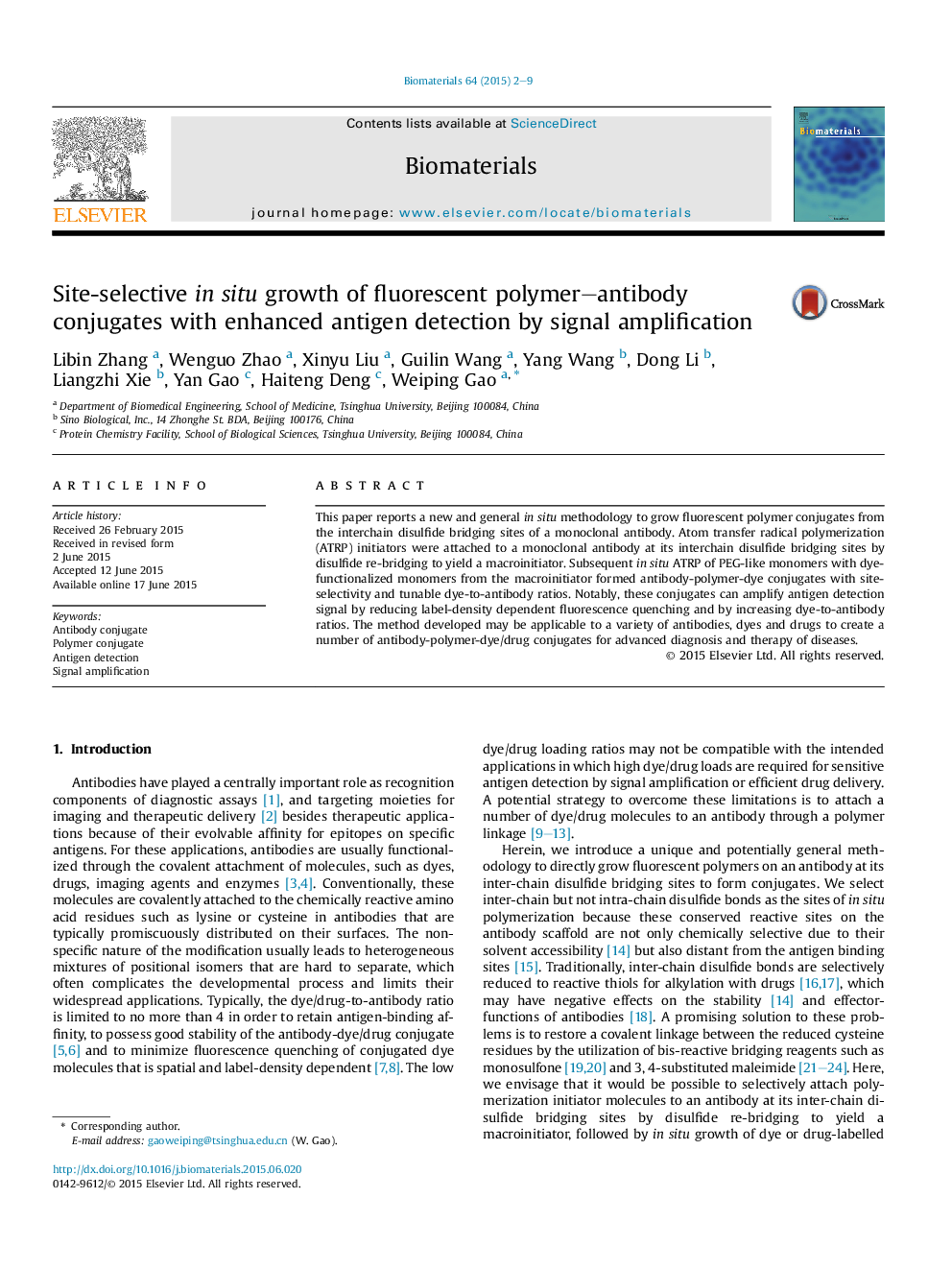| Article ID | Journal | Published Year | Pages | File Type |
|---|---|---|---|---|
| 5629 | Biomaterials | 2015 | 8 Pages |
This paper reports a new and general in situ methodology to grow fluorescent polymer conjugates from the interchain disulfide bridging sites of a monoclonal antibody. Atom transfer radical polymerization (ATRP) initiators were attached to a monoclonal antibody at its interchain disulfide bridging sites by disulfide re-bridging to yield a macroinitiator. Subsequent in situ ATRP of PEG-like monomers with dye-functionalized monomers from the macroinitiator formed antibody-polymer-dye conjugates with site-selectivity and tunable dye-to-antibody ratios. Notably, these conjugates can amplify antigen detection signal by reducing label-density dependent fluorescence quenching and by increasing dye-to-antibody ratios. The method developed may be applicable to a variety of antibodies, dyes and drugs to create a number of antibody-polymer-dye/drug conjugates for advanced diagnosis and therapy of diseases.
